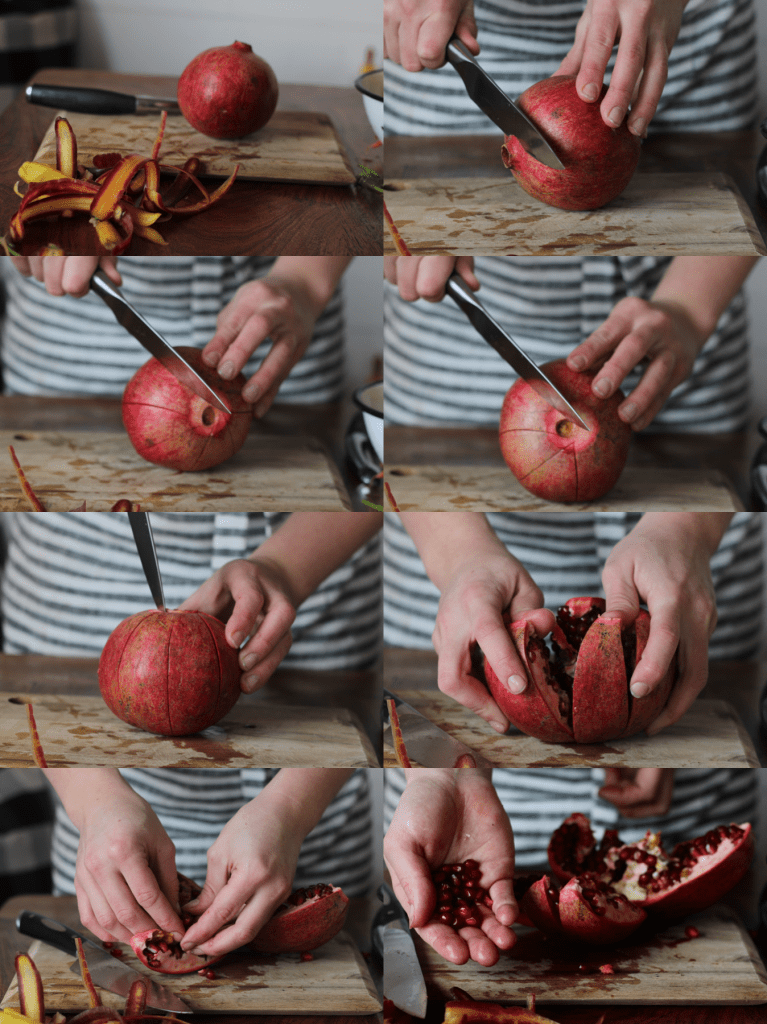You may have realized these fairly large, red, round, fruits popping up all over the stores this time of year that must mean: Pomegranates are in season!!! Oh how the sweetness and the bite to pomegranates are so delicious… read on to see how you cut them and why you should be eating them.

When we used to live in California (I was 4-6yrs at the time) we would visit the dairy plant my dad had been making product at, we would go around looking at the animals then stop at the pomegranate tree. Now, dad and mom told us not to pick the pomegranates because they would stain our clothes. But, one day dad and mom said we can try them this one time as long as we were careful and not to let the red juice get on our clothes. They were tiny and not very many were ripen, but the ones that were ripe were amazing!

First things first:
How do you cut them?

First your going to cut that top part off. Then, using your favorite knife score the sides by starting at the top and slowly working your way down, you can see how I kind of moved the pomegranate away from the board and pulled the knife toward me. Pull apart by putting your fingers in the middle and pulling the pieces away from each other. And voala! Easy! Now you got pomegranates to eat!


Now, for the health benefits: pomegranates are very high in essential vitamins and minerals, in one cup of the seeds/fruit (arils) there is:
- Fiber: 7 grams
- Protein: 3 grams
- Vitamin C: 30% of the RDI
- Vitamin K: 36% of the RDI
- Folate: 16% of the RDI
- Potassium: 12% of the RDI
Pomegranates are good for:
- High antioxidants
- Anti-inflammatory
- Cancer fighting
- Lower blood pressure
- Fights arthritis
- Reduce risks of heart diseases
- Antibacterial
- Anti-fungal
- Help improve memory
- Improve exercise
- immune support
Pomegranate extract and powder is typically made from the peel, due to its high antioxidant and punicalagin content.
Punicic acid, found in pomegranate seed oil, is the main fatty acid in the arils.




2 Comments